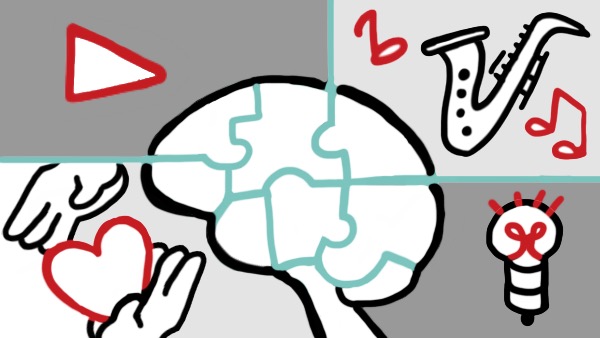At TruScribe, we’re always excited to talk about the principles of Scribology, our content creation guidelines. They spring from brain science and neuroscientific studies that promote the highest rates of engagement and retention in our videos’ audiences. We’ve refined and mastered these principles over a decade of video creation, and that neuroscientific foundation has always remained vital to our understanding of their ability to transform a project. So let’s look at why neuroscience is so relevant to video creation, and retention in particular.
Changing the Brain
The Berkeley Graduate Division’s article on Daniela Kaufer’s “How Students Learn” series presentation does a great job explaining some of the raw, material elements of neuroscience. The first and possibly most crucial point of discussion is that “From the point of view of neurobiology, learning involves changing the brain.” Retention is, in other words, reformation and novel formation of neurons—a physical change, not ‘just’ a mental one.
This means that the “most effective learning involves recruiting multiple regions of the brain for the learning task… memory, the various senses, volitional control, and higher levels of cognitive function” to create this optimal level of connection.
The piece goes on to comment on the role of active learning, a part of complex thought processes that are “more beneficial for learning because they involve a greater number of neural connections and more neurological cross-talk… stimulating a variety of areas of the brain and promoting memory.”
This is why the audio-visual sync of strong whiteboard video is so effective: it’s stimulating multiple areas of the brain and creating neurological change in multiple areas, anchoring retention through connections made throughout the brain.
The Socio-Emotional Factor
Simone Wessels-Bloom of Ceed Learning discusses neuroscience’s role in learning with a nod towards an ‘external factor: “it’s important to remember that people are wired to need social interactions and to make real connections with others. Learning happens in a social setting… [which] offers learners the opportunity to become emotionally engaged with the learning material, which means better learning takes place.”
Of course, not all video learning is fully conducive to a social experience, though much of it is—see any classroom or training exercise that involves showing a video for proof. Most relevant, perhaps, in Wessels-Bloom’s analysis is the inclusion of “emotional engagement.” Quannah Parker-McGowan certainly agrees.
“Focusing on creating a positive and stimulating learning environment for students can enhance their learning and go a long way in helping students retain new material,” Parker-McGowan explains, pointing out that retention is inherently linked to emotional states—and experience—as anything else.
When we think about this divorced from our focused, neuroscientific discussion, it makes even more sense. If you’re under extreme stress, you’re not making and retaining new memories. You’re just trying to get through the experience. The same can be true of any overstimulated state, which is why our videos are designed to eliminate distraction from the message throughout.
When you’re relaxed, calm, and able to focus, information is easy to retain. This positive, receptive state is what Scribology’s guidelines create, through familiar and simple visuals being created by a relatable and mobile human hand and with voiceover synced exactly to the visuals as they’re drawn.
Dopamine: The Neurotransmitter of Many Trades
That drawing, as the words are spoken, creates a surprise—and surprise releases dopamine. Dopamine is a neurotransmitter with “diverse functions”, having gained an “almost mythical status” due to its multiple and varied functions in the brain.
Rockefeller University’s article in Neuroscience News explains the experiments of Vanessa Ruta and her team, which utilized the well-mapped neurons and overall simpler brain of the fruit fly to study the effects of dopamine. Their findings included that in both flies and humans, dopamine “provide[s] a signal for learning,” playing a major role in “shap[ing] the animals’ future behavior,” and also “correlate strongly with the animal’s ongoing behavior.”
This means, in simple terms, that to create a dopamine release is to create a learning experience in the viewer. We know that a release of dopamine causes a viewer to become and remain curious, which is how Scribology ensures consistent and ongoing engagement with as each drawing is created.
Reformation and Retention
To borrow a line from Charlie Kaufman, “Adaptation is a profound process.” Learning is adaptation—the actual reformation of the structure of the brain to incorporate new information. It involves external factors like social interaction, internal ones like the correct emotional state, and the complex contributions of neurotransmitters like dopamine.
Scribology, our content creation guidelines, are a conscious embrace of these neuroscientific truths, leveraging them towards increased engagement and heightened retention rates. Far from a basis in preference or arbitrary values, our principles are derived directly from brain science data to create the most effective videos for our clients and viewers.

